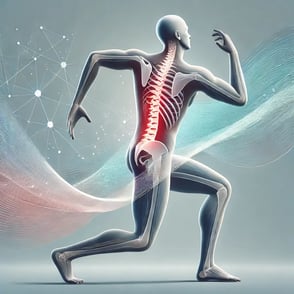Shoulder Pain Treatment: Why It Keeps Coming Back
And what no one’s assessing that keeps you stuck.
You’ve done the bands.
The stretches.
The deep tissue sessions that leave you sore—but not better.
And yet... the shoulder pain keeps coming back.
Here’s why:
Most treatment stops at the symptom.
Very few dig into the system.
Why Traditional Shoulder Rehab Fails
Most PT clinics focus on the pain site—tight traps, weak rotator cuff, “bad posture.”
You get massage, ice, isolated cuff work... maybe a few postural cues.
Learn more in our breakdown of why traditional PT often falls short →
But if your shoulder keeps flaring up, it’s not because you didn’t stretch enough.
It’s because no one addressed how your system actually breathes, stabilizes, and moves under load.
Let’s be blunt:
You don’t have a bad shoulder.
You have a system that’s compensating for inputs it hasn’t adapted to.
What’s Actually Going On
In the people I work with—lifters, climbers, parents, coaches—I see the same patterns again and again:
- Limited Thoracic Mobility
When your upper back isn’t moving well, your shoulder often ends up doing too much of the work.
- Uncoordinated Breathing
Shallow or imbalanced breathing changes how your ribcage moves.
And if your ribcage can’t support your shoulder blade, you lose the foundation for stable, efficient movement.
- Lack of Integration
You can strengthen your rotator cuff all day, but if your scapula isn’t syncing with your spine and ribcage, you’re missing the big picture.
- Guarded Nervous System
Sometimes your system isn’t weak—it just doesn’t feel safe yet.
Guarding, bracing, and sensitivity are signs that your body needs better inputs, not more isolation drills.
We dive deeper into this idea in What Most People Get Wrong About Healing →
The Revenant Reframe: System First, Always
At Revenant PT, we don’t isolate—we integrate.
We start with a full-body movement assessment to figure out how you breathe, brace, rotate, and load.
See how we assess the full system in A Holistic / Full-Body Approach to Rehab →
We look at:
-
Ribcage mechanics
-
Spinal mobility
-
Scapular rhythm
-
Nervous system tone
-
How you move under load, not just on a table
Then we rebuild your body’s ability to move and adapt—step by step:
-
Restore mobility with intention
-
Layer in coordination and control
-
Build resilience through progressive loading
-
Help your system feel safe again through consistent exposure
Relief Isn’t the Goal. Ownership Is.
This isn’t about chasing comfort.
It’s about reclaiming capacity.
You deserve more than symptom management.
You deserve a system that helps you move well—and stay moving well.
Learn how we approach long-term progress in Rethinking PT: Moving Beyond Reactive Care →
Ready to Break the Cycle?
If you’re tired of managing symptoms and ready to actually solve the problem—
Book a free consultation.
Let’s figure out what your system’s been trying to tell you all along.
Tags:
Chronic Pain, Physical Therapy, Movement-based physical therapy, Nervous System & Pain, Revenant Physical Therapy, Root-Cause Rehab, Shoulder Pain, Scapular Control, MobilityMarch 31, 2025
.png?width=322&height=138&name=Revenant%2Blong%2Blogo%2B(white).png)


-1.jpeg)
.jpeg)
-1.jpeg)
-1.jpeg)
-1.jpeg)
.jpeg)
.jpeg)
-1.jpeg)
Comments